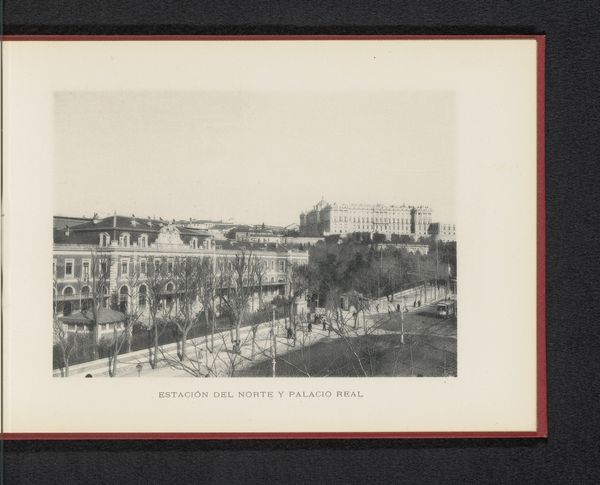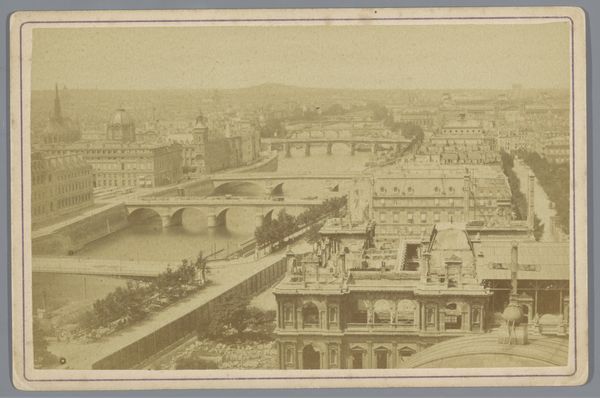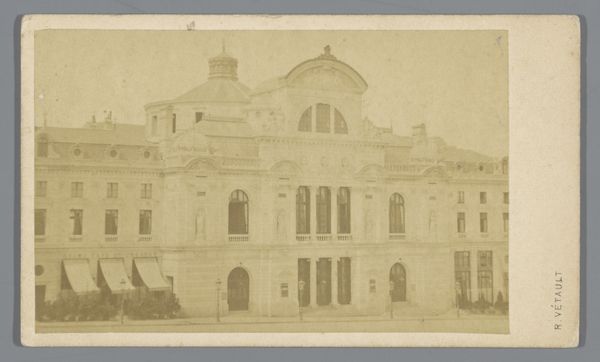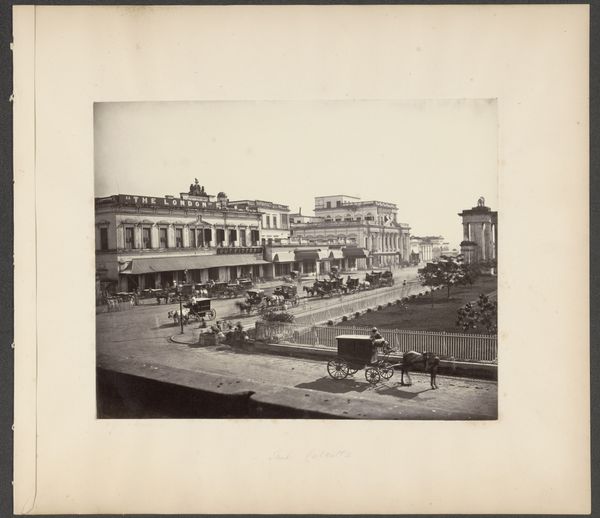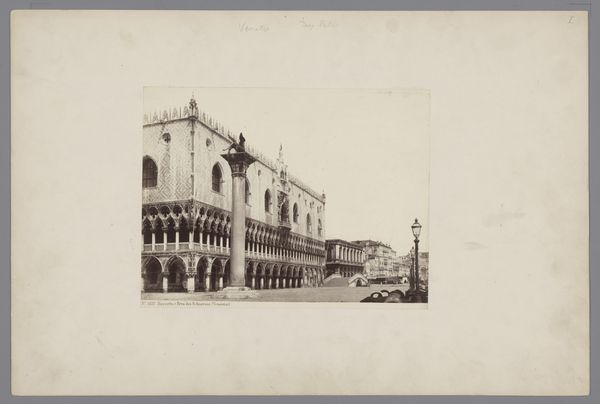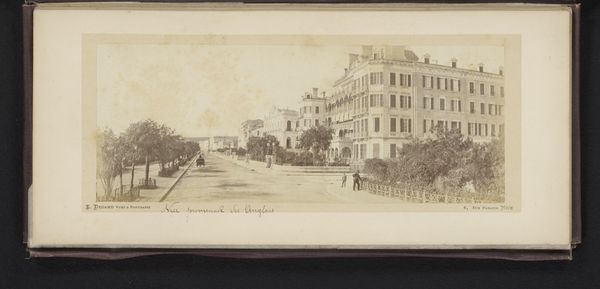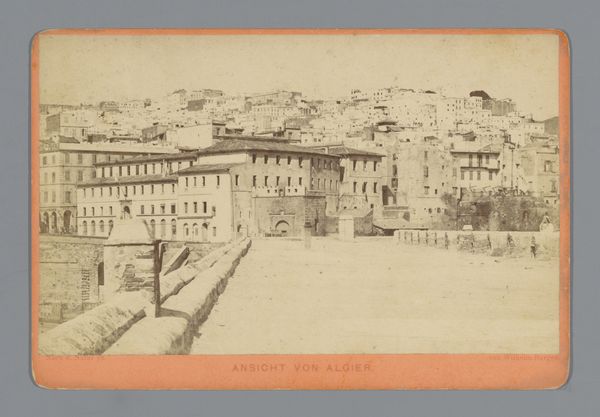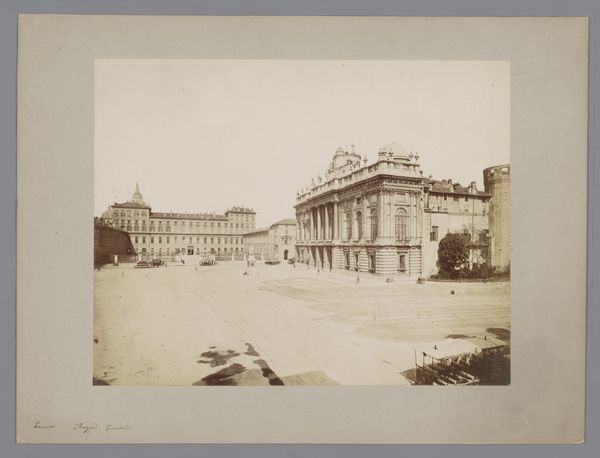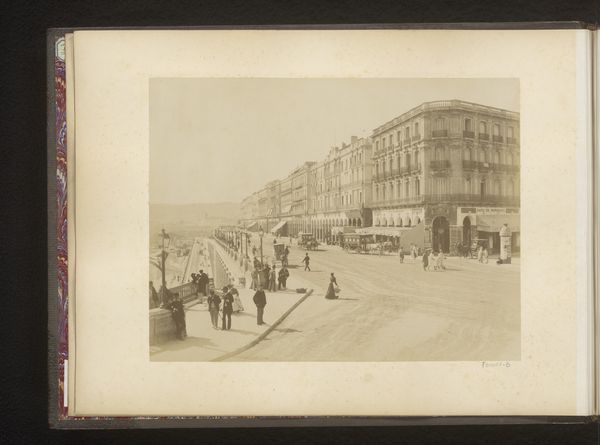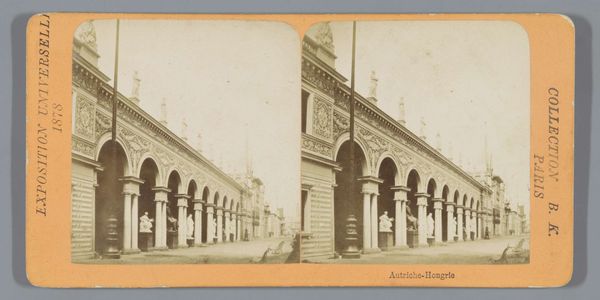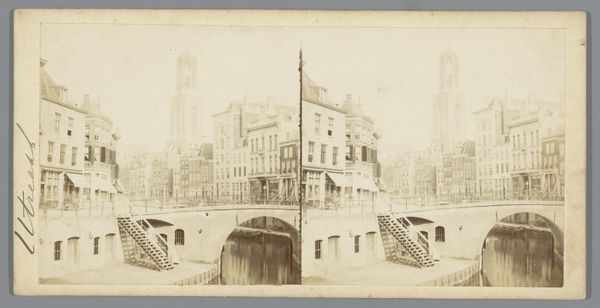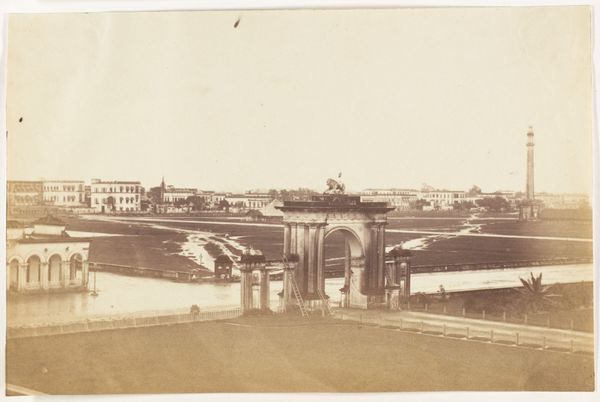
photography, albumen-print
#
photography
#
orientalism
#
cityscape
#
albumen-print
Dimensions: height 63 mm, width 105 mm
Copyright: Rijks Museum: Open Domain
Curator: My goodness, it's like stepping into a mirage! What’s your immediate sense of this old photograph? Editor: It's called 'Rampe Magenta in Algiers', an albumen print created by Claude-Joseph Portier between 1863 and 1882. I am drawn in by the repetitive arches, they create this feeling of almost being trapped in a maze or, maybe a grand, faded stage set. Curator: The ‘Orientalist’ style here is interesting, no? The French colonial project in Algeria influenced Portier greatly; notice the European aesthetic imposed on the Algerian cityscape? The arcades, the ordered structure - this photo isn’t just documenting Algiers, it’s actively reimagining it. Editor: I see that… yet I also sense an almost… tender gaze? It is beautiful, yet, with the colonial aspect included it feels charged somehow, it's difficult to fully celebrate, if that makes sense? Curator: Absolutely. Photography in colonial contexts walks a fine line between documentation and appropriation. Portier presents an ‘Algiers’ tailored for a European audience, subtly reinforcing power dynamics through composition and framing. Editor: So, you are telling me, that this picture says more than I initially though, this is not some regular postcard from a beautiful city. There is social context to consider… and not just aesthetics! The monochrome amplifies the contrast of the arches—making this sense of confinement palpable… I think… The longer I look, the less simple it seems. Curator: Indeed. It embodies the complexities and contradictions inherent in the colonial gaze. The very act of capturing Algiers was itself a gesture of possession. Editor: Wow, now I see something very disturbing now that you made me see this picture from another angle. The photo does not exist solely as a static depiction; instead it continues echoing even up until the present day with discussions and insights. It also is an insight into how art is perceived by us now, with modern values of diversity, power and inclusivity. Curator: Yes, reflecting on this image reminds us that history isn't just about what was, but about how we engage with its layered meanings now. Thanks for a powerful journey, Editor.
Comments
No comments
Be the first to comment and join the conversation on the ultimate creative platform.
